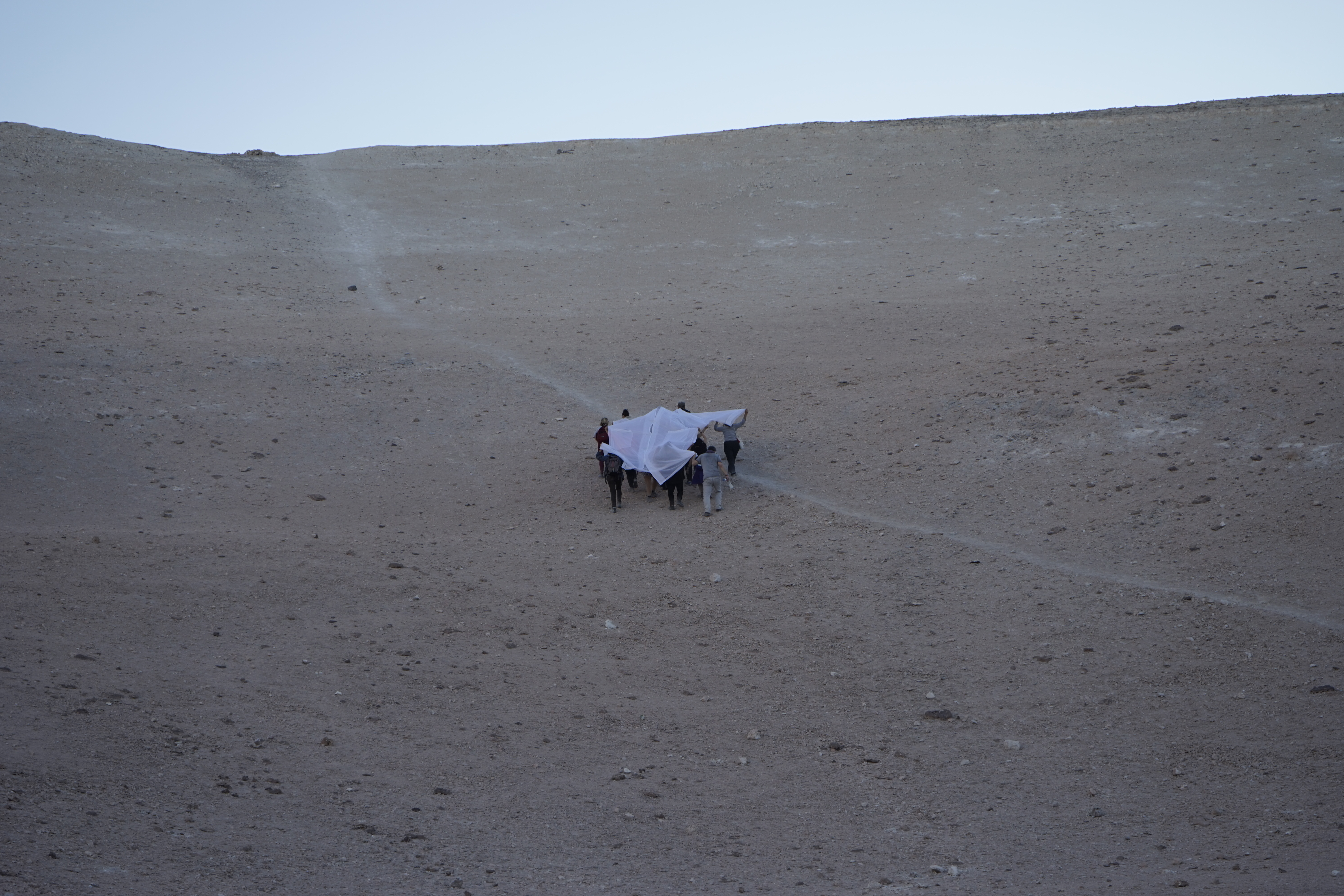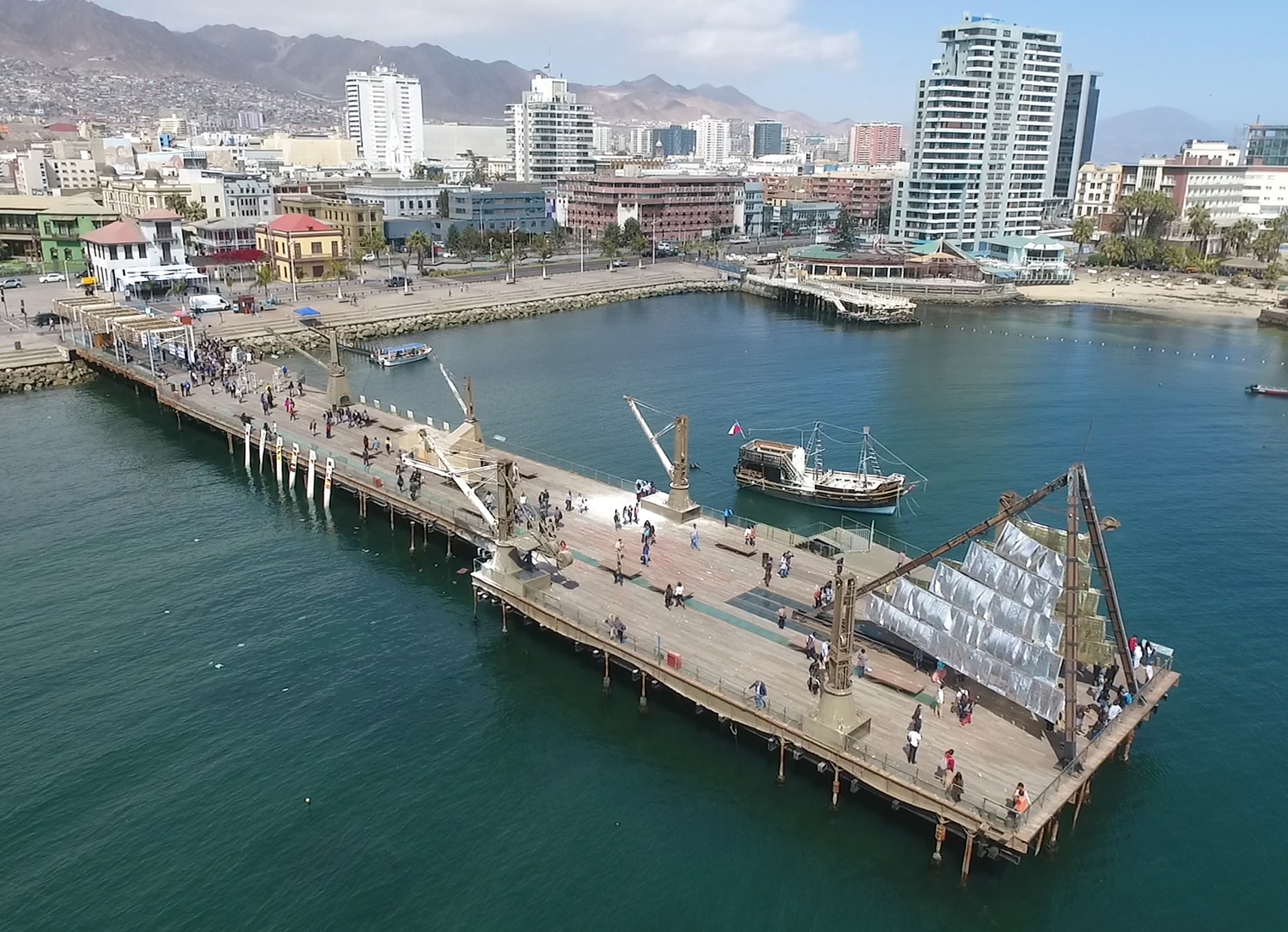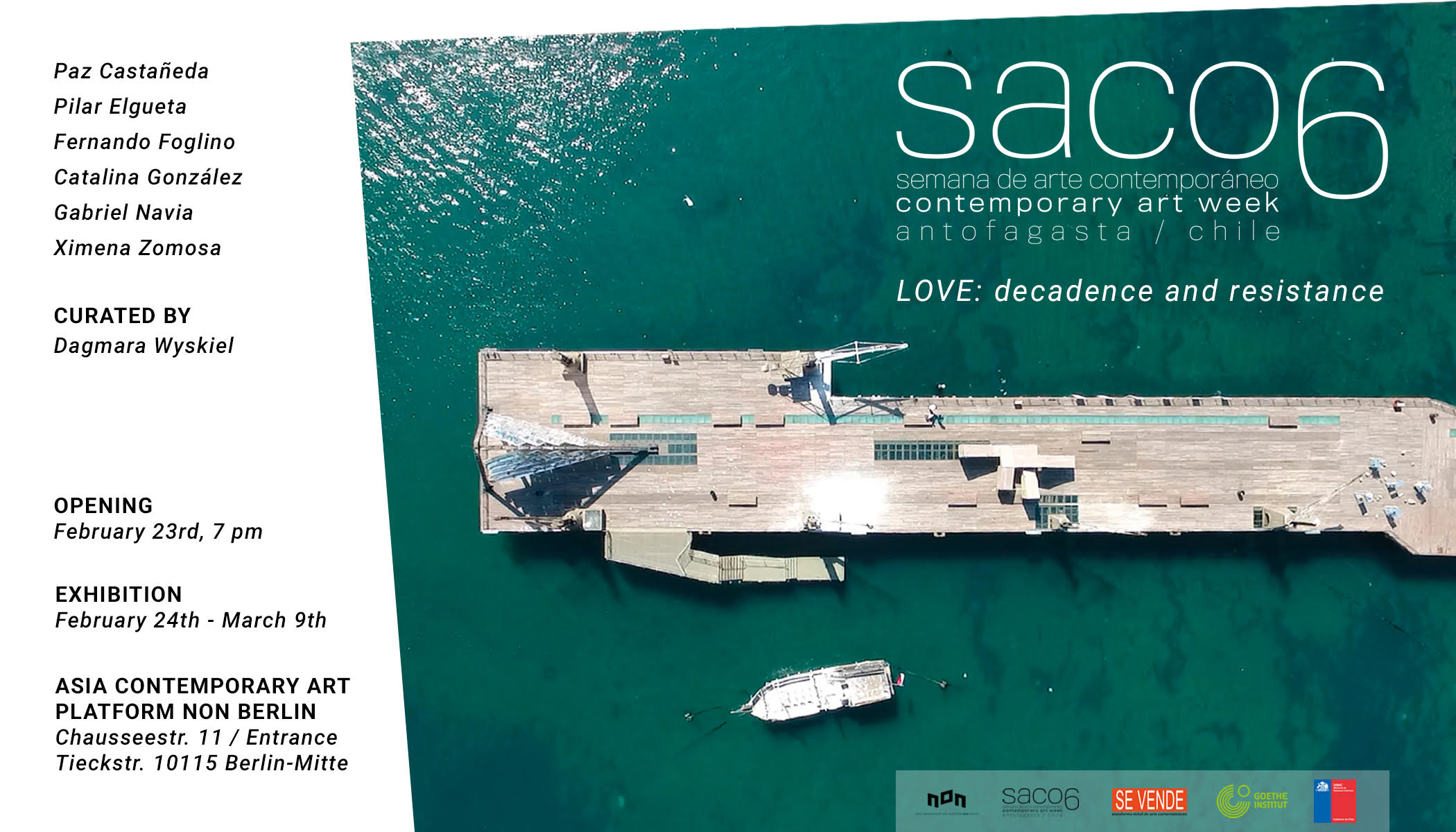


SACO6_LOVE: DECADENCE AND RESISTANCE
The latin lover in times of crisis
Latin America is a land of a syncretism of affections. An officially Catholic continent, where the majority of children are born out of wedlock, where native religions live together peacefully with sin and guilt, and where the peak of patriotism is experienced not in an ideological debate but rather at a football match. A culture stigmatized outside by the image of the Latin lover, a compulsive but irresistible polygamist and by an endless number of his variables, cultural and sentimental clichés that are exported, such as the mariachi, an obese male chauvinist; the black man from the Caribbean, king of the salsa; and the impeccable and masculine tango dancer, among others.
Alternative family structures are opened. What was considered reprehensible in the past is now frequently in fashion and draws people to experiment, both spiritually and worldly. The conservative circles and the transgressors look at each other with disgust, and at the same time with some attraction. Sometimes looking leads to something else.
Love hurts, says an old saying, and it is here where the rate of violent crimes of passion is one of the highest. And it is also here where the struggle and the resistance for freedom, equality and tolerance produced unimaginable changes a half century ago.
In parallel with violence, Latin America is the land of devotion. Religious festivals with their dances, offerings, rituals and states of trance speak of experiences of transcendental love, that are ever more clearly opposed to the logic of the ecclesiastic sacraments, essentially being shamanic rituals. Polytheistic world views in a procession behind a cross turn out to be coherent in the Latin logic. Mestizo turns out to be what is most purely self-defining. Gustavo Buntinx talks about “illicit and unusual associations but not unlike those that our ongoing experience of apparently unconnected simultaneities offers.”[1]
Perplexity is caused by the omnipresent coexistence of the affective world structured by the patriarchy, now in somewhat of a decline, with the simultaneous explosion of freedom and diversity in the ways of relating and loving. In hybrid social ecosystems, all loves mutate, from that which relates us with those closest to us and defines our immediate day-to-day constellation, or from the emotional identification with the territory to which we belong, whether it be marked on a map, or is ideological or virtual, to that which evokes something beyond that, whether it be religious or spiritual love, or love of the Pachamama (Mother Earth) or the universe. Very rapid and significant transformative experiences enable us to think that we are facing a distinctly Latin revolution, without heads being cut off or bonfires, but indeed irreversible and transcendental. We see thatit is possible to mix fire and water and produce a new element profoundly native to here. We bet on this multi-dimensional hybrid as the raw material of the works for SACO6.
How is Latin love today? We leave the question open, in the form of a Latin American call.
1 Lo impuro y lo contaminado III: Pulsiones (Neo) Barrocas en las rutas de Micromuseo [The impure and the contaminated III: Impulses (Neo) Baroque on the routes of Micromuseum]. Chile Triennal Catalogue, page 237.
ABOUT SACO
SACO Contemporary Art Week is held annually in the region of Antofagasta in northern Chile, as an independent initiative of the Collective SALE Mobile Platform Contemporary Art, under the direction of Dagmara Wyskiel and production of Christian Nunez. It aims to establish a permanent core of reflection, criticism and dialogue through the work in the territory marked by the absence of institutions dedicated to pursuing these purposes. The world capital of copper mining, proposed as an alternative to deepen excavations no less valuable or less urgent and renewable wealth – creativity and dialogue.
Each edition of SACO has a particular focus and unique characteristics. In this way, the land to be excavated is renewed annually, preventing the depletion of resources in the deposits.
http://proyectosaco.cl/
SACO6_LOVE: decadence and resistance
In cooperation with
︎ EXHIBITION
The latin lover in times of crisis
Latin America is a land of a syncretism of affections. An officially Catholic continent, where the majority of children are born out of wedlock, where native religions live together peacefully with sin and guilt, and where the peak of patriotism is experienced not in an ideological debate but rather at a football match. A culture stigmatized outside by the image of the Latin lover, a compulsive but irresistible polygamist and by an endless number of his variables, cultural and sentimental clichés that are exported, such as the mariachi, an obese male chauvinist; the black man from the Caribbean, king of the salsa; and the impeccable and masculine tango dancer, among others.
Alternative family structures are opened. What was considered reprehensible in the past is now frequently in fashion and draws people to experiment, both spiritually and worldly. The conservative circles and the transgressors look at each other with disgust, and at the same time with some attraction. Sometimes looking leads to something else.
Love hurts, says an old saying, and it is here where the rate of violent crimes of passion is one of the highest. And it is also here where the struggle and the resistance for freedom, equality and tolerance produced unimaginable changes a half century ago.
In parallel with violence, Latin America is the land of devotion. Religious festivals with their dances, offerings, rituals and states of trance speak of experiences of transcendental love, that are ever more clearly opposed to the logic of the ecclesiastic sacraments, essentially being shamanic rituals. Polytheistic world views in a procession behind a cross turn out to be coherent in the Latin logic. Mestizo turns out to be what is most purely self-defining. Gustavo Buntinx talks about “illicit and unusual associations but not unlike those that our ongoing experience of apparently unconnected simultaneities offers.”[1]
Perplexity is caused by the omnipresent coexistence of the affective world structured by the patriarchy, now in somewhat of a decline, with the simultaneous explosion of freedom and diversity in the ways of relating and loving. In hybrid social ecosystems, all loves mutate, from that which relates us with those closest to us and defines our immediate day-to-day constellation, or from the emotional identification with the territory to which we belong, whether it be marked on a map, or is ideological or virtual, to that which evokes something beyond that, whether it be religious or spiritual love, or love of the Pachamama (Mother Earth) or the universe. Very rapid and significant transformative experiences enable us to think that we are facing a distinctly Latin revolution, without heads being cut off or bonfires, but indeed irreversible and transcendental. We see thatit is possible to mix fire and water and produce a new element profoundly native to here. We bet on this multi-dimensional hybrid as the raw material of the works for SACO6.
How is Latin love today? We leave the question open, in the form of a Latin American call.
1 Lo impuro y lo contaminado III: Pulsiones (Neo) Barrocas en las rutas de Micromuseo [The impure and the contaminated III: Impulses (Neo) Baroque on the routes of Micromuseum]. Chile Triennal Catalogue, page 237.
ABOUT SACO
SACO Contemporary Art Week is held annually in the region of Antofagasta in northern Chile, as an independent initiative of the Collective SALE Mobile Platform Contemporary Art, under the direction of Dagmara Wyskiel and production of Christian Nunez. It aims to establish a permanent core of reflection, criticism and dialogue through the work in the territory marked by the absence of institutions dedicated to pursuing these purposes. The world capital of copper mining, proposed as an alternative to deepen excavations no less valuable or less urgent and renewable wealth – creativity and dialogue.
Each edition of SACO has a particular focus and unique characteristics. In this way, the land to be excavated is renewed annually, preventing the depletion of resources in the deposits.
http://proyectosaco.cl/
SACO6_LOVE: decadence and resistance
In cooperation with
︎ EXHIBITION
OPENING
23 February 7pm
DURATION
24 February - 9 March
ARTIST
Fernando Foglino,Gabriel Navia,Catalina González,Paz Castañeda,Ximena Zomosa,Pilar Elgueta.
CURATOR
Dagmara Wyskiel
IN COOPERATION WITH
Se Vende Goethe Institut DIRAC, Ministerio de Relaciones Exteriores, Chile
CATEGORY
Archive
23 February 7pm
DURATION
24 February - 9 March
ARTIST
Fernando Foglino,Gabriel Navia,Catalina González,Paz Castañeda,Ximena Zomosa,Pilar Elgueta.
CURATOR
Dagmara Wyskiel
IN COOPERATION WITH
Se Vende Goethe Institut DIRAC, Ministerio de Relaciones Exteriores, Chile
CATEGORY
Archive